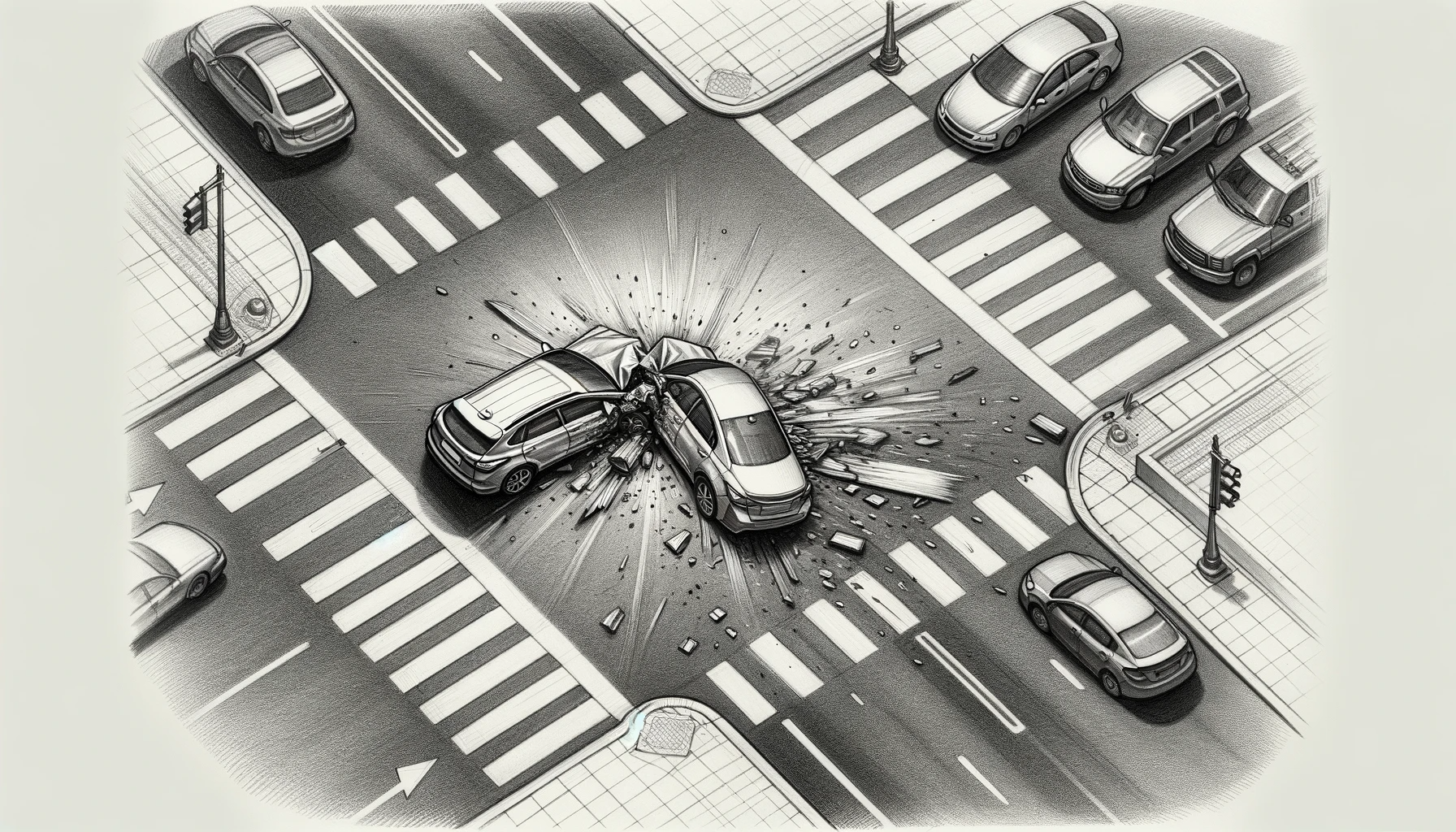Welcome back to our series, ‘The Anatomy of Common Accidents.’ In our second post, we focus on side-impact crashes, often known as T-bone collisions. These accidents occur when the side of one vehicle is hit by the front or rear of another vehicle, forming a “T” shape. If you missed our first post on rear-end collisions, catch up here.
As always, if you’ve been in an accident and need assistance, reach out to Stillman & Friedland at 615-244-2111 for a complimentary consultation.
Why Are Side-Impact Crashes Dangerous?
Side-impact crashes can be particularly hazardous due to the limited protection the side of a vehicle provides. Unlike the front and rear, which have more space to absorb the impact, the sides offer less protection, making injuries more likely. Here are the key dangers:
- Significant Injuries: Occupants on the side of the impact are especially vulnerable to serious injuries, including head, neck, chest, and pelvic injuries.
- Vehicle Intrusion: The force of the impact can cause the vehicle structure to intrude into the cabin, leading to further harm.
- Less Protection: Side airbags and reinforced doors help, but the protection is generally less than what’s at the front or rear of the vehicle.
Common Causes of Side-Impact Crashes
Understanding the causes of these accidents is the first step in prevention:
- Failure to Yield: Drivers who ignore stop signs or traffic lights often cause T-bone collisions.
- Turning Across Path: When a driver makes a turn without noticing oncoming traffic, it can result in a side-impact crash.
- Distracted Driving: Not paying attention to the road can lead to missing traffic signals or failing to notice other vehicles.
- High-Speed Intersections: Speeding through intersections significantly increases the risk of side-impact crashes.
Preventing Side-Impact Crashes
Taking proactive measures is crucial in minimizing the risk of T-bone accidents.
- Stay Alert at Intersections:
- Check Multiple Times: Before crossing an intersection, glance left and right more than once. This double-checking helps in spotting any vehicles that you may have missed the first time.
- Watch for Red Light Runners: Be vigilant for drivers who might run red lights or stop signs. A brief pause after your light turns green can be a lifesaver.
- Obey Traffic Signals:
- Adhere to Stop Signs and Lights: Always come to a complete stop at stop signs and look for oncoming traffic before moving. At traffic lights, follow the signals without trying to beat the yellow light.
- Follow Speed Limits: Maintaining the speed limit ensures you have enough time to react to traffic signals changing.
- Avoid Distractions:
- Focus on the Road: Eliminate activities like using your phone, eating, or adjusting the radio while driving.
- Be Mindful of Surroundings: Constantly scan the road for potential hazards, including vehicles that may suddenly enter your path at intersections.
- Defensive Driving:
- Anticipate Other Drivers’ Moves: Always assume other drivers may make sudden turns or lane changes. Keeping a safe distance and being ready to brake can prevent collisions.
- Use Mirrors and Signals: Regularly check your mirrors and always use turn signals to inform others of your intended maneuvers, enhancing safety for everyone on the road.
By following these guidelines, drivers can significantly reduce their risk of being involved in side-impact crashes. Remember, awareness and cautious driving are key to ensuring safety on the roads.
What to Do After a Side-Impact Crash
If you find yourself in a side-impact collision, follow these steps:
- Check for Injuries: Immediately assess yourself and passengers for any injuries.
- Move to Safety: If possible, move your vehicle to a safe area to avoid further accidents.
- Exchange Information: Safely exchange contact and insurance information with the other driver.
- Document the Scene: Take photos and gather as much information as possible.
- Report the Incident: Contact the police, especially if there are injuries or significant damages.
- Seek Medical Attention: Some injuries may not be immediately apparent. It’s essential to get checked by a medical professional.
- Contact Legal Assistance: For guidance on how to proceed, contact Stillman & Friedland at 615-244-2111.
Conclusion
Side-impact crashes can have severe consequences, but understanding their causes and prevention can help reduce their frequency. Stay vigilant, especially at intersections, and remember, safety is a collective responsibility. If you’re involved in a T-bone collision, Stillman & Friedland are here to support you every step of the way.
Stay safe, Nashville, and join us next time as we continue our journey through ‘The Anatomy of Common Accidents.’
Because we care…
Stillman and Friedland







